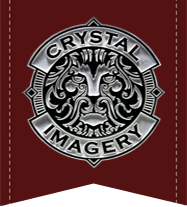5 Differences Between Cheap and Expensive Whiskies

As you grab the decanter, take out the stopper, and pour your whiskey into custom whiskey glasses, a thought might strike you. What is the difference between cheap and expensive whiskies? Without the label, the whiskey in your decanter could be either to an outside observer. How would they know the difference? What makes expensive whiskey better? Here are a few of the factors that play into the price of a whiskey.
Synthetic vs. Fresh Ingredients
The first factor, and one of the most important, is the ingredients. Expensive whiskey is often made from fresher, higher-quality ingredients, naturally lending a higher price to the whiskey before it is even created. On the other hand, cheaper whiskey might use synthetic ingredients or lower-quality ingredients, taking away from the taste of the whiskey.
Aging
Another significant factor is how old the whiskey is before it is poured into your personalized engraved glasses. This has two meanings. One is literally how old the whiskey is, thus making it rarer. This is the entire time from going into the barrel until it hits your whiskey glass. The other is how long it was aged in a barrel. The longer it is aged, the more it mellows, and the more time for flavors to develop. Once it is out of the cask and bottled, this timer stops. This is the number you will find on the front of many whiskey bottles. The older the whiskey, the more money it takes to produce and the longer it must be stored. Plus, the “angel’s share” evaporates from the casks over time. Age does not necessarily reveal a higher quality but can be a clue.
Water Quality
The quality and location of the water used can create different flavor profiles in whiskey. If the water is from an exotic source, it will cost more. A Japanese distillery, for example, might use virgin snow that has been filtered through thousand-year-old granite as it flows down a mountain rather than a typical stream.
The Type of Cask
Choosing a cask for a whiskey is an artform itself. There are different types of wood, such as American oak, Spanish oak, and Japanese Mizunara. Some are more porous, which gives a higher level of woodiness in the whiskey. Other casks held different liquors, such as port. There is also the age of the cask. Mass-produced whiskey has much less thought put into what cask is used.
Cogeners or Fusil Oils
Seeing the bottom of your glasses etched with your monogram might mean you are done with the glass of whiskey, but it might not be done with you. Having too much means a headache and a hangover - if you are drinking low-quality whiskey. High-quality whiskey, which is more expensive, usually has the cogeners, or fusil oils, better filtered out from the whiskey. These impurities play a part in whether or not you get a hangover as the human body can’t process them well. It can take more high-quality whiskey to get a hangover than lower-quality whiskey.
About Crystal Imagery
It started with a hobby. In 2000, Eric Schuchart started a fun side project of making custom engraved glasses as gifts for friends and family. He received rave reviews. Fast forward to 2013 when he teamed with Sherri Blum, a noted interior designer to the stars, to create Crystal Imagery. Crystal Imagery uses a deep-carving technique to create a unique engraving, adding shadow and depth to the engraving that you can feel. It’s a result typical laser and rotary surface etchings can’t replicate. Crystal Imagery offers personalized whiskey glasses, highball glasses, champagne flutes, Glencairn glasses, Nick and Nora glasses, flasks, and more glassware. If you need to add a touch of elegance to your home bar, choose personalized glassware from Crystal Imagery.
Pour whiskey of any quality into customized whiskey glasses available from crystalimagery.com
